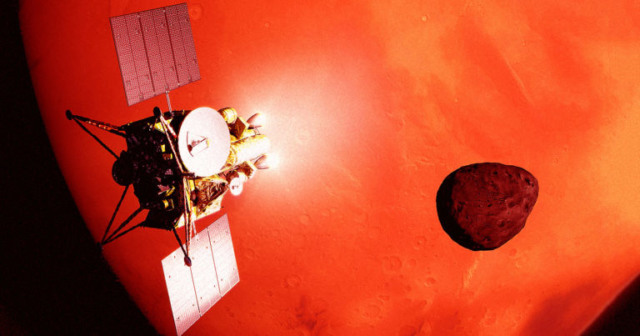Japan has greenlit a mission to explore Mars’ moons and bring back a sample. Gimme an astronomical fuck yeah!
Japan! Those motherfuckers. Making astronomical moves and such. They’ve officially given the go-ahead to a project that will explore Mars’ moons. Not only that, but the project intends to bring a sample back from Phobos!
The Verge:
Japan is moving ahead with plans to land a spacecraft on Phobos, one of Mars’ moons. If successful, the mission would mark the first time any country has touched down on the surface of the Martian moon and potentially the first round-trip mission to the Mars system.
Japan’s space agency, JAXA, announced today that the Martian Moons Exploration (MMX) project had officially moved into the development phase. This means that the team will start working on the hardware and software for the mission ahead of a planned launch in 2024.
MMX will take off sometime in 2024 and arrive at Mars around 2025. It will spend the next three years surveying both moons of Mars, Phobos and Deimos, creating detailed maps of their surfaces. During that time, MMX will also land on Phobos and take a sample, digging at least two centimeters into the surface. The team also plans to include a rover to hop around on the surface, similar to the one released on an asteroid in 2018. The spacecraft will be equipped with 11 instruments taking detailed measurements during the entire mission. If all goes well, the mission will return back to Earth with the sample from Phobos by 2029.
Phobos is an intriguing target for planetary scientists. Researchers still aren’t sure if Phobos and Deimos are asteroids captured by Mars’ gravity or if they were formed after something huge slammed into the planet. The new mission could help answer those questions.
People are also interested in Phobos as a stepping stone for future human missions to Mars. “Humans can realistically explore the surfaces of only a few objects and Phobos and Deimos are on that list,” Jim Green, NASA chief scientist, said in the JAXA announcement. “Their position orbiting about Mars may make them a prime target for humans to visit first before reaching the surface of the Red Planet, but that will only be possible after the results of the MMX mission have been completed.”
NASA will be contributing two instruments to the MMX mission: one that will be able to analyze elements on the moon’s surface and a “pneumatic sampling device.” NASA researchers have been discussing missions to Phobos for years, including crewed missions. A paper from a 2007 workshop held out hope that human missions to the Martian moons “will help get and keep the Humans to Mars ball rolling earlier than otherwise possible.“
MMX could help get that ball rolling again. Hopefully, it will be more successful than its predecessors. In 1988, the Soviet spacecraft Phobos 2 was set to send both a rover and lander to the surface of the moon. Sadly, its computer malfunctioned just before it was scheduled to send out its explorers, and the mission was deemed a failure. The last attempt to land anything on Phobos didn’t fare any better: the Russian Phobos-Grunt mission launched in 2011 but didn’t make it past Earth orbit. Instead, it crashed back into the Pacific in 2012.




